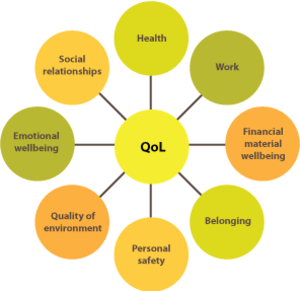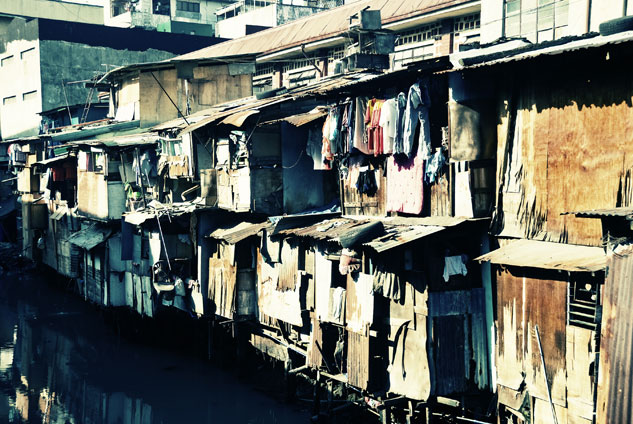Module 4: The Economics of Globalization
| Site: | MoodleHUB.ca 🍁 |
| Course: | PAVE Social 10-1 |
| Book: | Module 4: The Economics of Globalization |
| Printed by: | Guest user |
| Date: | Sunday, 30 November 2025, 8:56 AM |
Description
Module 4 Lessons and Assignments.
Table of contents
- Introduction
- Prosperity and Satisfaction
- Geographic location and prosperity
- What is Quality of Life?
- What is prosperity?
- Prosperity and Me
- Prosperity, Identity, and Citizenship
- What are we trying to sustain?
- Sustainability Concerns
- Sustainable Prosperity
- The Most Significant Events
- Glossary Quiz
- Economic Globalization
- Events
- Contemporary Economic Globalization
- Political and Economic Ideas
- Contemporary vs. Historical Globalization
- Ideas and Factors of Contemporary Globalization
- Open Letter
- Economic globalization and prosperity
- Corporate Citizenship
- Economic and political barriers
- Opportunities of economic globalization
- Is Prosperity Sustainable?
- Economic globalization
- Who Benefits?
- Transnational Corporations and the Interests of the Country.
- Glossary
- Unit 4 Quiz
- Position Paper #2
Introduction
How does economic globalization shape prosperity and sustainability?

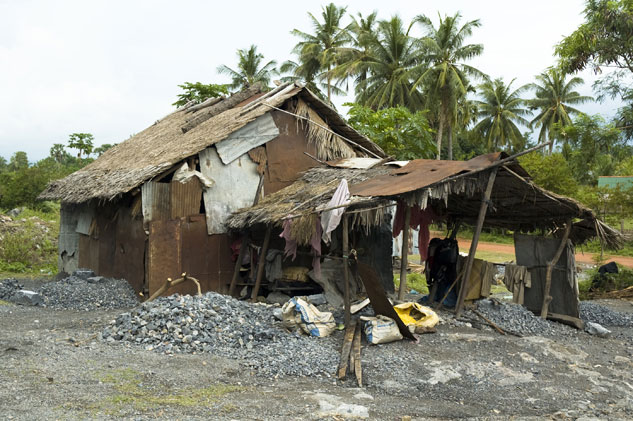
| In this module, you will analyze the relationship between quality of life, prosperity, and economic globalization. Many supporters of economic globalization promote the opportunities to make prosperity universal for all global citizens. Other views hold that economic globalization creates gaps between those who live prosperously and those who live in poverty. There are individuals and non-governmental organizations that take the position that the maintenance of a high quality of life for a small percentage of the world’s population cannot sustain the needs of those who lack access to the opportunities of economic globalization. The future sustainability of resources, the land, and cultures locally and globally are key issues in the twenty-first century because of the great demand for and the exhaustion of resources and the resulting disparities in quality of life. |
quality of life: social, economic, and political conditions that contribute to the satisfaction people have with their lives.
The struggle to access food, clothing, and shelter may reflect a low quality of life. A high quality of life may reflect the balance between work and leisure.
economic globalization: a dimension of globalization that refers to the expansion of trade globally and the interdependence of the economies of the world due to the development of global trade networks and transportation and communication systems
universal: available to all members of society
sustain: to maintain a condition with an adequate supply
sustainability: the condition of maintaining the current status into the future
Prosperity and Satisfaction
How satisfied are Canadians with their level of prosperity?

Individuals have different views on prosperity. Your satisfaction with what is available to you in your life shapes your view of your prosperity. From the point of view of some people outside of Canada, Canadians are often considered to be quite prosperous. To what extent is this view common among Canadians?
cost of living: a measure of how affordable basic goods and services are in comparison to the average incomes of citizens
This also measures how affordable it is to maintain a high standard of living.
disposable income: the portion of an individual’s wages that remains after meeting the costs of purchasing basic necessities such as food, clothing, shelter, and health care
This lack of income may be a factor in an individual’s ability to access opportunities such as leisure time and non-essential goods.
Assignment
Geographic location and prosperity
What is the relationship between quality of life and prosperity?
Prosperity can be measured by the level of poverty that exists in a country. A country that is prosperous tends to have a lower level of poverty among its citizens. This type of data is collected and presented in the annual United Nations Human Development Index
|
poverty: a condition where an individual is lacking in the financial and material possessions necessary for an adequate quality of life United Nations Human Development Index: an indicator of the human development of a country based on a measure of the extent of opportunities for citizens to education, health care, income, employment, life expectancy, and gross domestic product |
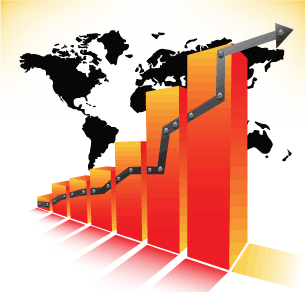 |
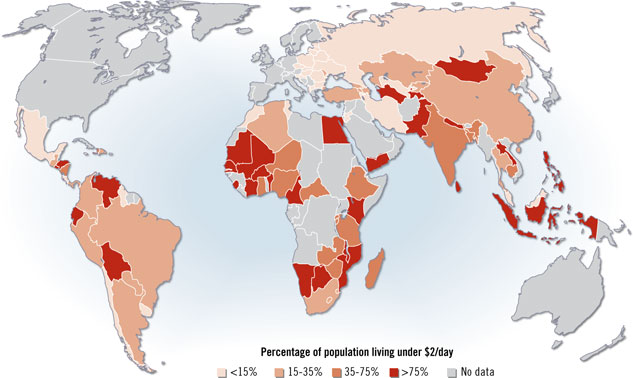
Reflection
Please complete this activity -it is not for marks but should be completed.
|
low development: a measure of the quality of life based on the rate of gross domestic product, life expectancy, and education
This ranking describes a country that has a low domestic product, low life expectancy, and low literacy rate.
World Bank: an organization made up of 185 countries that provides financial assistance to developing countries
first world country: a country with the infrastructure, resources, and economy capable of engaging in a range of industries, including tertiary and quaternary industries (production and services) to generate a high gross national income and offer a high standard of living to its citizens; another name for a developed country
second world country: a country that is beginning to move from an agriculturally based economy to an industrialized one; another name for a developing country
third world country: a country that continues to have economies that are primarily agricultural and have yet to transition to an industrialized economy; another name for less-developed country
developed country: a country with the infrastructure, resources, and economy capable of engaging in a range of industries, including tertiary and quaternary industries (production and services) to generate a high gross national income and offer a high standard of living to its citizens
developing country: a country that has an economy that is primarily resource based and has a relatively low standard of living for its citizens
less- or least developed country (LDC): a country lacking the infrastructure, resources, and economy capable of engaging in a range of industries to promote a strong economy to contribute to an adequate quality of life for its citizens
The economy is often based on a resource industry and lacks the ability to expand to manufacturing and/or service industries.
industrialized: a term used to describe a developed country or first world country; a country with the infrastructure, resources, and economy capable of engaging in a range of industries, including tertiary and quaternary industries (production and services) to generate a high gross national income and offer a high standard of living to its citizens
non-industrialized: a term used to describe less-developed countries that have not developed beyond resource-based economies
These countries often lack the resources and infrastructure to create their own manufacturing industries.
north: reference to the location of a country north of the equator
south: reference to the location of a country south of the equator |
Write a statement about the relationship between geographic location and prosperity. Can you suggest two key factors other than geographic location that support why countries in the Northern Hemisphere generally are the most prosperous?
What is Quality of Life?
|
Two very similar terms are standard of living and quality of life. Quality of life is related to the satisfaction you have with the life opportunities and living conditions available to you. Standard of living is connected to the opportunities or the lack of opportunities to access basic needs such as food, clothing, shelter, health care, and education. Most statisticians use the standard of living to measure the quantity and quality of goods and services available to citizens. Generally they correlate a low life expectancy to a low standard of living. Prosperity or material wealth is a factor in accessing a high standard of living. For many citizens, possessing a high standard of living may be equivalent to a high quality of life. Quality of life has many understandings. Is it possible to have a high quality of life in a less-prosperous country or to have a low quality of life with material wealth? |
standard of living: a measure of the quantity and quality of goods and services (such as food, clothing, shelter, health care, education) to which an individual has access life expectancy: a measure of the average life span or survival rate of a population A low life expectancy is often related to a least developed country where the low standard of living contributes to a low rate of survival for citizens of the country. material wealth: the quantity of money and property a person has In the case of a country, it reflects the value of the goods and services it has and the income available to provide essential services, such as health care and education, to the citizens of the country. |
Reflection
Complete this activity Quality of Life
What is prosperity?

In some world views, prosperity is good fortune. Connected to good fortune are health, happiness, and money. What does it mean for a country to have prosperity?
Read
As leader of a country, it is the responsibility of the political leader to make decisions and plan for the future and well-being of the citizens. How do leaders create prosperity? What kind of prosperity? Do all leaders strive for the same understanding of prosperity? Read the following statements from two political leaders: Prime Minister Stephen Harper and Former President George Bush.
Political Leaders and Prosperity
Review what these political leaders describe as prosperity for their country. Write the following two headings in your Notebook: Canada and the United States. List the characteristics of prosperity described by each leader. Identify the common goals for prosperity and highlight the ones that are unique to a specific country and leader.
Reflection
Write a definition of prosperity that captures the diverse understandings presented by the political leaders.
Prosperity and Me
What assumptions do understandings and attitudes about prosperity form about perceptions of an individual’s identity and citizenship?
Upon first glance, which image might influence you in identifying the individual as prosperous? Which image influences who you think might be the individual who currently holds and can access rights and freedoms? What guided your conclusions?

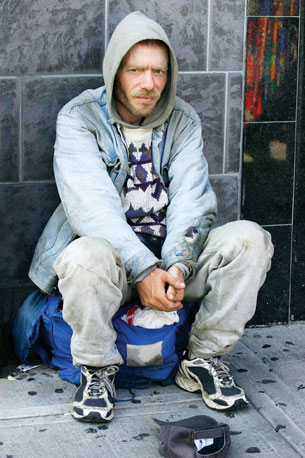
Is prosperity necessary for an individual to be recognized as holding identity and citizenship? Think of the attitudes that people may attach to prosperity. With prosperity, a successful-looking individual may easily have identity and citizenship recognized.
Without prosperity, is an individual challenged to affirm equal status in identity and citizenship? What do you think the image of the man tells you about his prosperity?
What do you know about the life of Howard Hughes? He is the subject of a movie called The Aviator. He left a legacy worth over $2 billion, yet prior to his death, he was often ignored in the street as a homeless man.
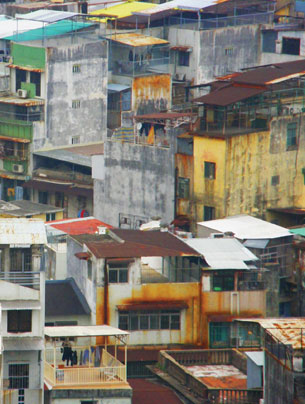
Reflection
Assumptions About Prosperity
Reflect on your initial impressions about prosperity when you viewed the images. Write responses to these questions in your journal or notes.
- How logical are the assumptions you make about prosperity, identity, and citizenship?
- Are the assumptions you make about the identity and citizenship of citizens in least prosperous countries valid?
- People have diverse understandings of prosperity. It may be about material wealth, health, life satisfaction, and expectancy or living the kind of life you choose. Without prosperity, does your identity and citizenship have any value? Reflect on whether your own identity and citizenship is tied to what prosperity you have in your life.
Prosperity, Identity, and Citizenship
In what ways does prosperity impact ways of life, identity, and citizenship?
Your living conditions, freedoms, and rights are shaped by the prosperity your country can develop. Living in a fairly prosperous country such as Canada may create perceptions that rights and living conditions are the way of life for most Canadians. The experience of living in an impoverished country is something that may not be familiar to many Canadians. What ways of life, sense of who you are, and rights would you have in a country that struggles with prosperity?

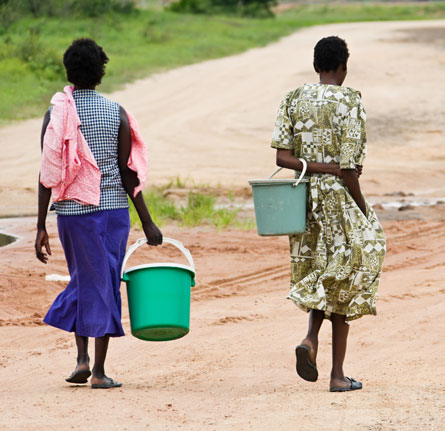
Internet
Free the Children is a website created by Craig and Marc Kielburger. Of the many activities they support, one calls upon the We Generation, people of your age, to adopt a village in Sierra Leone, Kenya, China, or Sri Lanka. The We Generation can support needs in education, health care, income, water, and sanitation by adopting a village. What existing ways of life require action such as the Free the Children projects? Select one of the village countries listed on the website and find information about living conditions, ways of life, and quality of life. A video slide show is available with each village country page. You may also wish to follow up with additional research on the Human Development Index for each of these village countries.
Reflection
Write a Journal or Blog reflection. Compare your own identity and citizenship to that of the children in the village countries featured in Free the Children. What difference does prosperity make on identity and citizenship?
What are we trying to sustain?

Begin by having a Discussion:
|
Reflect on what impact the use of bottled water had on sustaining your quality of life. Sustainability is the ability to maintain current and future resources. It is also about being able to maintain ways of life and quality of life. There are diverse perspectives on what resources, what ways of life, and how sustainability will be achieved. Multinational corporations may perceive sustainability as economic and resource directed. Countries may see sustainability as essential to the economic and political survival of the country. Citizens may see sustainability as a guarantee of keeping this planet viable for future generations. What are all three stakeholders trying to sustain? |
multinational: a business that expands to become a corporation that conducts business in many countries viable: a condition of being capable of growing or developing stakeholder: an individual or group that is involved or affected |
Research
This is a required activity but is not graded. This research will help you with future assignments.
To gather as many understandings about this question as possible, research what multinational corporations, countries, and citizens are working to sustain.
- multinational corporations – Select two corporations of your choice and research their strategies for sustainability. Identify the common theme of these strategies. What are multinational corporations working to sustain?
- countries – Research Canada and one other country of your choice. Find out what the governments of these countries promote as plans for sustainability. Identify the common theme of these strategies. What are countries working to sustain?
- citizens – Research two individuals (for example, Naomi Klein or David Suzuki) of your choice. These individuals may be of diverse perspectives on sustainability. Find out what they are promoting as strategies for sustainability. Identify the common theme of these strategies. What are citizens working to sustain?
Sustainability Concerns
Why is sustainability a concern in the globalizing world?
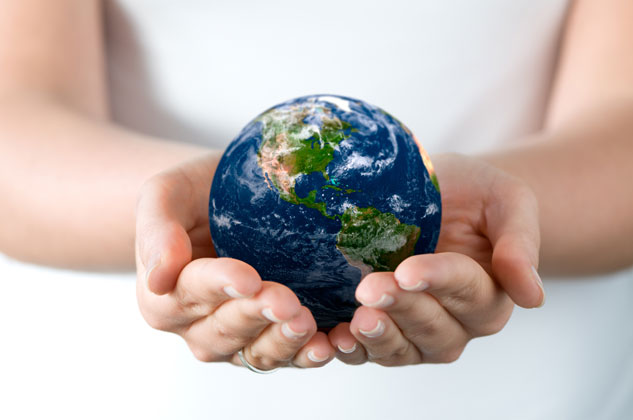
American Al Gore created a tour and the film Inconvenient Truth to raise awareness of sustainability. Why is sustainability a priority in the twenty-first century? What is happening with globalization that a growing number of citizens are concerned that expanding globalization and sustainability are not compatible?
You may wish to watch the film Inconvenient Truth.
Take a look at Al Gore speaking about the climate crisis on Ted Talks.
Discuss the following with a variety of people:
- What is the future for groups and individuals in a globalizing world?
- Predict likely outcomes. What is being lost if steps are not taken to sustain the following?
- culture
- language
- resources
- environment
- quality of life
Sustainable Prosperity
Economic Prosperity: the material wealth often viewed as necessary to ensure a high quality of life for an individual or a country.
You have explored the inequalities in the distribution of prosperity in the world, even in Canada. Many countries take on the responsibility of not only ensuring the prosperity of their own citizens but also making commitments to help other countries develop prosperity as a global responsibility. Another issue for countries is how to sustain prosperity. Economic prosperity based on material wealth may increase or decrease depending on the availability of resources and conflict; for example, war and invasion may reduce the prosperity of a country. It’s no longer a priority of developing prosperity but making it a sustainable prosperity. What does that look like?
Sustainable Prosperity is a Canadian non-governmental organization. It describes sustainable prosperity as building an environmentally greener and more prosperous economy for Canada.
The United Nations Division for Sustainable Development states the following: Development that meets the needs of the present without compromising the quality of future generations to meet their own needs.
The Social Studies Online Guide provides three contexts to consider:
|
institutional or social sustainability: the ability to maintain the social and governmental structures, rules, and practices of a society over time economic and financial sustainability: the ability to maintain a strong financial status and/or economy in the future environmental or ecological sustainability: the ability to maintain the qualities that are valued in the environment |
Reflection
Please complete the What Does Sustainable Prosperity Look Like?
The Most Significant Events
Creating or Limiting Sustainable Prosperity?
Which global events have had the most significant impact on sustainable prosperity?
In this section you will analyze current events to evaluate the potential impact these events have on sustainable prosperity. In collaboration with two or more students, follow the steps of this challenge to create a ranking of which events represent the most significant impact on creating or limiting sustainable prosperity.
First complete the reflection 10 Most Significant Events.
Assignment
Please complete the The Most Significant Events assignment at this time.
Glossary Quiz
cost of living: a measure of how affordable basic goods and services are in comparison to the average incomes of citizens
This also measures how affordable it is to maintain a high standard of living.
developed country: a country with the infrastructure, resources, and economy capable of engaging in a range of industries, including tertiary and quaternary industries (production and services) to generate a high gross national income and offer a high standard of living to its citizens
developing country: a country that has an economy that is primarily resource based and has a relatively low standard of living for its citizens
disposable income: the portion of an individual’s wages that remains after meeting the costs of purchasing basic necessities such as food, clothing, shelter, and health care
This lack of income may be a factor in an individual’s ability to access opportunities such as leisure time and non-essential goods.
economic and financial sustainability: the ability to maintain a strong financial status and/or economy in the future
economic globalization: a dimension of globalization that refers to the expansion of trade globally and the interdependence of the economies of the world due to the development of global trade networks and transportation and communication systems
economic prosperity: the material wealth often viewed as necessary to ensure a high quality of life for an individual or a country
environmental or ecological sustainability: the ability to maintain the qualities that are valued in the environment
first world country: a country with the infrastructure, resources, and economy capable of engaging in a range of industries, including tertiary and quaternary industries (production and services) to generate a high gross national income and offer a high standard of living to its citizens; another name for a developed country
greenhouse gases: gases produced by carbon emissions resulting from both natural and industrial processes
It is the growing quantity of greenhouse gases produced by industry- and energy-consuming citizens that has become an issue. Greenhouse gases can cause a rise in global temperature, which can lead to changes in the global climate.
impoverished: living in poverty and challenged to meet basic needs
industrialized: a term used to describe a developed country or first world country; a country with the infrastructure, resources, and economy capable of engaging in a range of industries, including tertiary and quaternary industries (production and services) to generate a high gross national income and offer a high standard of living to its citizens
institutional or social sustainability: the ability to maintain the social and governmental structures, rules, and practices of a society over time
less- or least developed country (LDC): a country lacking the infrastructure, resources, and economy capable of engaging in a range of industries to promote a strong economy to contribute to an adequate quality of life for its citizens
The economy is often based on a resource industry and lacks the ability to expand to manufacturing and/or service industries.
life expectancy: a measure of the average life span or survival rate of a population
A low life expectancy is often related to a least developed country where the low standard of living contributes to a low rate of survival for citizens of the country.
life satisfaction: an individual’s perspective on his or her level of well-being and happiness
Quality of life is a factor in whether an individual will acknowledge that he or she has a high level of life satisfaction. An individual may have access to the necessities of life but may not be satisfied with his or her quality of life.
low development: a measure of the quality of life based on the rate of gross domestic product, life expectancy, and education
This ranking describes a country that has a low domestic product, low life expectancy, and low literacy rate.
material wealth: the quantity of money and property a person has
In the case of a country, it reflects the value of the goods and services it has and the income available to provide essential services such as health care and education to the citizens of the country.
multinational: a business that expands to become a corporation that conducts business in many countries
non-industrialized: a term used to describe less-developed countries that have not developed beyond resource-based economies
These countries often lack the resources and infrastructure to create their own manufacturing industries.
north: reference to the location of a country north of the equator
poverty: a condition where an individual is lacking in the financial and material possessions necessary for an adequate quality of life
prosperity/prosperous: a condition of being successful or fortunate
quality of life: social, economic, and political conditions that contribute to the satisfaction people have with their lives
The struggle to access food, clothing, and shelter may reflect a low quality of life. A high quality of life may reflect the balance between work and leisure.
second world country: a country that is beginning to move from an agriculturally based economy to an industrialized one; another name for a developing country
south: reference to the location of a country south of the equator
stakeholder: an individual or group that is involved or affected
standard of living: a measure of the quantity and quality of goods and services (such as food, clothing, shelter, health care, education) to which an individual has access
sustain: to maintain a condition with an adequate supply
sustainability: the condition of maintaining the current status into the future
third world country: a country that continues to have economies that are primarily agricultural and have yet to transition to an industrialized economy; another name for less-developed country
United Nations Human Development Index: an indicator of the human development of a country based on a measure of the extent of opportunities for citizens to education, health care, income, employment, life expectancy, and gross domestic product
universal: available to all members of society
viable: a condition of being capable of growing or developing
World Bank: an organization made up of 185 countries that provides financial assistance to developing
Quiz
Economic Globalization
What forms the basis of economic globalization?
To what extent is a country’s level of economic freedom related to economic globalization?
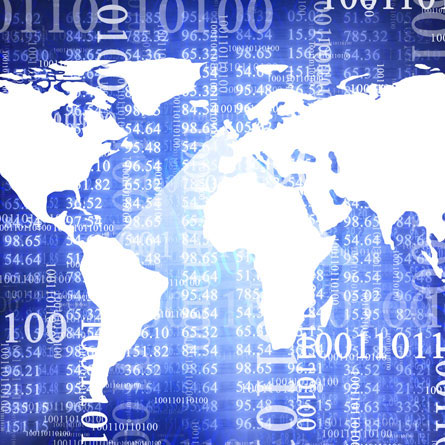
Countries and Economic Freedom
|
According to FreetheWorld.com, a website about the economic freedom of the world, Hong Kong, Singapore, and New Zealand rated the best for economic freedom in 2016. Venezuela and Libya were assessed the worst. In this inquiry you will analyze the relationship between economic freedom and conditions that encourage or prevent the expansion of economic globalization. What place is Canada ranked? |
economic freedom: the ability of an individual or country to produce, trade, or consume any goods or services without barriers as encouraged by democratic and free market principles interdependence: the relationship between countries and their economies The boom and bust of one country’s economy may have global impact on the economies of other countries. |
Internet
This is a required activity to support the inquiry but will not be graded.
Go to the website and find the “Economic Freedom of the World Annual Report.” What criteria can determine the extent of a country’s economic freedom?
(You will find this information at the beginning of each annual report.)
Events
What events lead to the development of economic globalization?
Economic globalization is about the growing interdependence of trade and economies. In what ways are the recent economic events in Alberta connected to economic globalization?
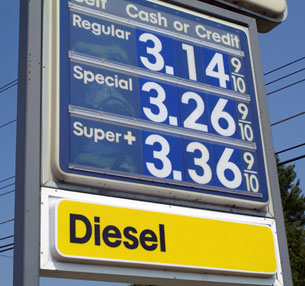
Research and Reflections
Select one of the following topics or a topic from current news headlines, and research what it is about and how it was caused. Identify the global economic factors that created these events.
- Disparity or decline of the Canadian dollar with the American dollar
- rising or falling fuel prices
- higher or lower than $100-per-barrel oil prices
- rising food prices at the supermarket
- shutdown of outsourced services such as the Dell Call Centre
- American tarrif policies
In what ways are the recent economic events in Alberta connected to economic globalization? Explain.
Read pages 9 and 10 in Perspectives on Globalization
Contemporary Economic Globalization
What events led to the development of contemporary economic globalization?
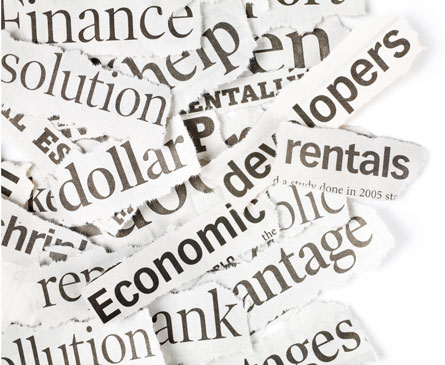
| Each of these events did not occur in isolation but as a response to issues and events of a specific time period. Most economists consider the context of after the Second World War as the time period whencontemporary economic globalization emerged. Many of them see the resulting economic, political, and social impacts on prosperity and sustainability as having origins in the twentieth century. | contemporary economic globalization: often used to refer to the post-Second World War period when economic policies and practices led to increased global trade and interdependence |
Read
Read pages 209 to 213 in Perspectives on Globalization. This will give you an introduction to the four events considered critical to the expansion of economic globalization.
Assignment
Please complete your Contemporary Economic Globalization assignment at this point.
Economic globalization has its origins in the conditions at the end of World War II and the emergence of the Internet and technology. The creation of the World Bank, the regulation of currency, the International Monetary Fund, and the emergence of a global free market economy were created in response to the poor economic conditions.
Political and Economic Ideas
What political and economic ideas have most contributed to the expansion of contemporary globalization?
What underlying economic goals and practices form the basis of a corporation’s operating plan?
Internet
This is a required activity to support the inquiry but may not be graded by your teacher.
global giant: a business that expands to become a multinational or transnational corporation
Select one of the following three global giants. Visit its website and examine the economic goals and practices it promotes in its business operations. You will find these goals promoted in specifically tabbed sections of the website.
Media Giant – Go to the Time Warner website and examine the stated values in “About Us,” “Citizenship,” and the “Businesses” of the company.
Beverage Giant – Go to The Coca-Cola Company website and click on the “Corporate Responsibility” link. Examine the strategic vision and then examine “Sustainability of Our Business.”
Fast Food Giant – Go to the McDonald’s website and click on the “Corporate McDonald’s” link. Examine the ideas under “Investor Relations” and “Investing in McDonald’s.”
Reflection
Please complete your Global Giants, Economic Goals, and Practices reflection at this point.
Contemporary vs. Historical Globalization
What is contemporary globalization in comparison to historical globalization?
Economic globalization can be understood in different forms. Aspects of the Age of Globalization emerged around the eighteenth century. The contemporary era of globalization is considered to have emerged in the twentieth century.
Historical and Contemporary Globalization
Review the ideas in Module 2 that formed the foundation of historical globalization:
-
the rise of capitalism
-
industrialization
-
imperialism
-
Eurocentrism
Review the motivations for creating the international monetary system, the World Bank, and the expansion of the free market economy at the end of the Cold War. This information can be found on the reading pages 209 to 213 in Perspectives on Globalization.
Which political and economic ideas and factors have most contributed to the expansion of contemporary economic globalization?
There are diverse understandings of how contemporary economic globalization developed. Is globalization a good thing?
Read pages 214-218 and page 229-240.
Read about people of economic influence on pages 214 to 216 in Perspectives on Globalization.
Read about the link between freer trade and economic globalization, the regulation of freer trade, and freer trade between Canada and the United States on pages 217 and 218 in Perspectives on Globalization.
Read about international agreements on pages 229 to 235 in Perspectives on Globalization.
Read about transnationals on pages 236 to 240 in Perspectives on Globalization.
Read about telecommunications and transportation technologies on pages 241 to 245 in Perspectives on Globalization.
Internet
View the interview with Naomi Klein, the author of No Logo: Taking Aim at the Brand Bullies. The interview can be found in the CBC Archives.
Take a look at this economic rap between Keynes and Hayek? What major differences do these economists have?
Ideas and Factors of Contemporary Globalization
Greater liberalization or greater regulation of market forces?
Explore the website Commanding Heights.
It provides three episodes about the expansion of contemporary globalization. View Chapters 2 and 3 in Episode 1 about the emergence of the ideas of John Maynard Keynes and Friedrich Hayek.
View Chapters 4 and 5 in Episode 1 on the Commanding Heights website about the ideas that emerged after the First World War and the Great Depression.
View Chapters 6 and 7 in Episode 1 on the Commanding Heights website about the ideas that emerged after the Second World War.
View Chapter 8 in Episode 1 on the Commanding Heights website about Milton Friedman.
|
contemporary economic globalization: often used to refer to the post-Second World War period when economic policies and practices led to increased global trade and interdependence economic freedom: the ability of an individual or country to produce, trade, or consume any goods or services without barriers as encouraged by democratic and free market principles free market economy: an economic system characterized by competition, supply, and demand It supports the view that the consumer dictates what is produced with a response to purchase or not purchase the product or service. It promotes as limited government involvement as possible. free trade: a view supporting the removal of as many trade barriers as possible and encouraging free movement of goods and services between countries freer trade: refers to further expanding the ability to trade freely between countries This is often the motive for international trade agreements. Many supporters of freer trade believe freer trade will help the global economy and will resolve issues such as global poverty. Friedman, Milton: a twentieth-century economist who promoted economic ideas that greater prosperity and political and social freedom would be achieved if there were less government control and more free market practices Consumers would drive the economy with their spending and should adapt without government support if the economy struggles. global giant: a business that expands to become a multinational or transnational corporation Hayek, Friedrich: a twentieth-century economist who supported limits on the role of government in society, especially the economy interdependence: the relationship between countries and their economies The boom and bust of one country’s economy may have global impact on the economies of other countries. Keynes, John Maynard: a twentieth-century economist who influenced economic policies and practices He supported a strong government role in the economy. The government was essential in increasing the ability of consumers to spend and to keep the economy out of recession or a slump in economic activities for the country. He suggested that the government would increase or decrease taxes in response to consumer spending. outsourcing/outsourced services: the hiring of one company by another company, often in another country, to complete certain tasks of production trade agreement: a contract between two countries to trade freely between each other trade liberalization: the reduction of barriers to allow for free trade between countries transnationals: companies and/or people who have established corporate or home bases in two or more countries |
Quiz
Please access the Ideas and Factors of Contemporary Globalization Quiz
Economic ideas have existed throughout history. There was serious consideration of the economic ideas created by John Maynard Keynes, Friedrich Hayek, and Milton Friedman to re-establish the global economy after the Second World War and the recession in the 1980s. Trade liberalization and regulation have been used by countries to respond to global impacts on the prosperity of their countries.
Research
This is a required activity to support your challenge but will not be graded.
Select and summarize newspaper articles on international economic events. Scan the headlines for newspaper articles related to the following topics:
- trade liberalization
- foreign investment
- privatization
- outsourcing
- resource development agreements
- environmental legislation
- land-and resource-use projects
- conversion to knowledge economy
Assemble approximately eight to ten newspaper articles dealing with various international events that have economic implications for Alberta. Some examples include NAFTA, the Kyoto Accord, jobs moving abroad, and global interests in Alberta’s oil sands.
Open Letter
Assignment
Please complete the open letter defending greater liberalization or regulation. .
In this section you examined the events and ideas that formed the foundations of contemporary economic globalization. These events and ideas influenced how countries traded and economies operated. The adoption of these ideas varies among countries and times of economic boom and recession. At times, strong government regulation is called for by citizens. Many multinational corporations support ideas of a free market in society.
Economic globalization and prosperity
How does economic globalization create prosperity?
Who enjoys prosperity in a globalizing world?
The annual “Legatum Prosperity Index” (click to open) researches and ranks the prosperity and material wealth and life satisfaction of the people living in various countries.
Internet
This is a required activity to support the following assignment.
Go to the latest annual report and explore the following features:
- Browse the World – Scroll over the continents and examine the prosperity and wealth rankings of individual countries.
- Prosperiscope – Select five countries to compare their relative strengths and weaknesses in material wealth and life satisfaction.
- Happiness – More than just money? – Select Canada and compare how Canadians rank in comparison to other countries in terms of wealth and satisfaction.
Reflection
Please complete the Inquiry: Who Enjoys Prosperity? reflection at this point.
Corporate Citizenship
What are the political and economic challenges and opportunities of contemporary globalization?
|
“We need business to give practical meaning and reach to the values and principles that connect cultures and people everywhere.” —Ban Ki-Moon in an address to the Global Compact Board, 4 April 2007. New York. |
Corporate citizenship is about encouraging businesses to act as good global citizens. It is about the recognition that businesses have a role in promoting sustainable prosperity for the people in their own communities and in other areas of the world. In 2000 the United Nations created a framework for businesses to commit to responsible business practices. This voluntary framework is called the Global Compact. It calls on businesses to align their business practices to ten principles that address human rights, labour, the environment, and corruption.
corporate citizenship: refers to the extent that the actions and decisions of a multinational corporation are responsible and consider the impacts on people and the environment
A trend of the last few decades has been to align corporations with humanitarian causes to present an image of good corporate citizenship.
Internet
Notable Communication on Progress is the recognition of the commitments and actions of businesses and global giants that have committed to the principles of the Global Compact. On the Internet you can view the list of Global Compact participants who are recognized as making notable progress at the United Nations Global Compact website under the tab "Communicating Progress."
Peruse the list for businesses you recognize and examine what progress they have made in aligning with the ten principles.
Inactive or non-communicating participants are businesses that joined the Global Compact but have not communicated progress in aligning with the ten principles.
Reflection
In your Journal write your responses based on your review of the Global Compact.
- Write your impressions of which businesses are on the most recent list, absent from the list, and failed to respond to the commitment.
- Is your perception or attitude of the businesses influenced by their participation in the UN Global Compact?
- Would it impact your consumer choices if you knew the company of your choice was on the list, absent from the list, or failed its commitment?
Economic and political barriers
What economic and political barriers exist?
Canadians generally describe their ways of life as prosperous. This prosperity is strongly tied to the economic prosperity enjoyed because of Canada’s ability to participate in the international economy. Are there barriers placed on less-developed countries that would benefit from the opportunities of economic globalization?
Over the decades, media has captured scenes of protests against globalization, international trade organizations, and meetings of the most powerful economies of the world. Organizers of the World Trade Organization and the G8 meetings defend these organizations and conferences as key to addressing global issues, and they often focus on gathering international support for least developed countries. Why are there protests?

|
World Trade Organization: an international organization of 152 members that works to improve trade relations between its members and to remove tariffs and trade barriers; formerly the General Agreement on Tariffs and Trade page 229 has more info as well. G8 (Group of 8): a group of eight highly industrialized and democratic nations that agree to regularly meet and discuss economic and foreign policies. Check out page 231. |
Internet
This is a required activity to support the Explore but will not be graded.
Go to the Internet to examine Protest G8 – 2007, a viral video independently produced as a call for a protest at the June 2007 meeting of the G8. It presents contrasting images of quality of life and industrialization.
A key criticism by protesters is the political barrier created by the monopoly of decision making by a handful of economically powerful countries and multinational corporations. In the view of many protesters, international trade agreements and organizations are exclusive. They bar small businesses and least developing countries from participating in meaningful ways to benefit from the opportunities of economic globalization.
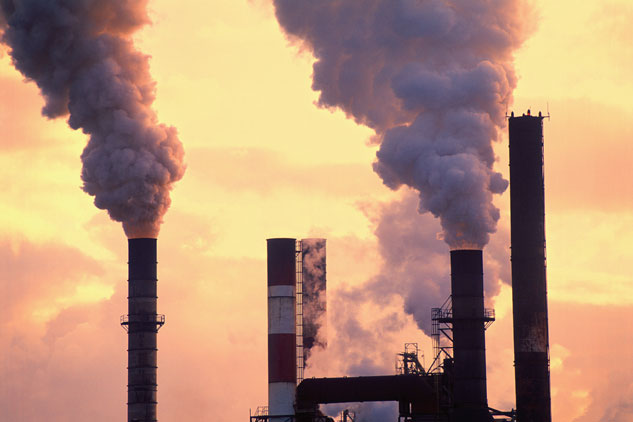

There are economic barriers that a country may face such as a lack of financial capacity to create industries, a skilled work force, and the infrastructure for production.
There may be technological barriers such as access to technology and the Digital Divide.
Digital Divide: refers to the gap between citizens of countries in the access to digital and information technologies
This gap may be a factor in the country’s ability to participate in the global economy.
Reflection
Complete this activity. Political, Economic, and Technological Barriers
To improve the prosperity of its citizens, least developed countries must be able to realize the opportunities of economic globalization. Based on the briefings, to what extent do barriers continue to prevent these countries from fully participating in the global economy?
Opportunities of economic globalization
What opportunities can economic globalization provide?
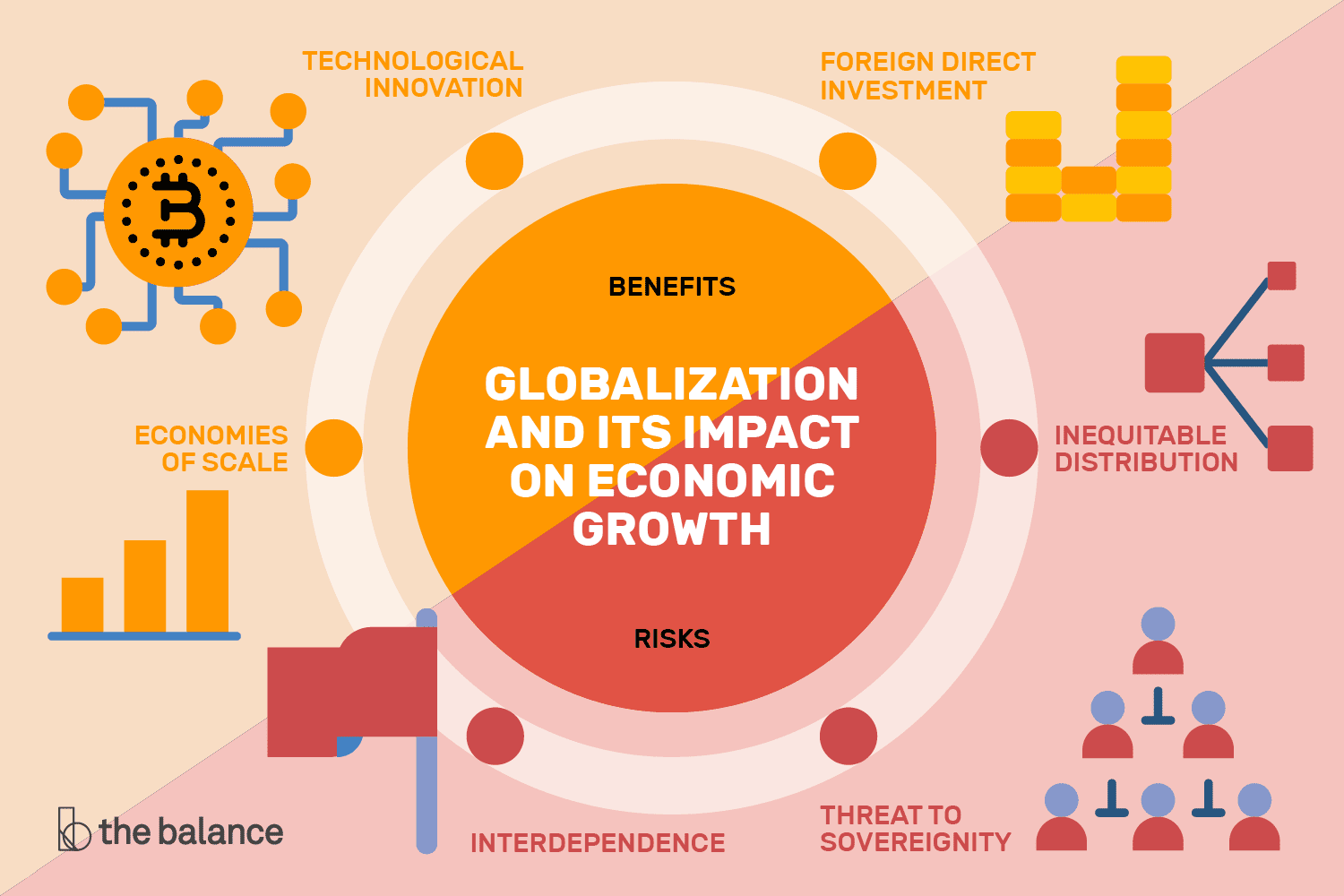
In this you will examine the role of trade agreements and international trade. Do these forces of economic globalization benefit the prosperity of people?
Read pages 251-260 and 218-221
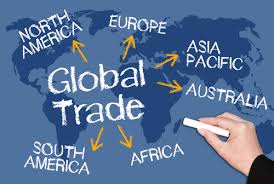
Read pages 251 to 253 in Perspectives on Globalization – Do trading blocs contribute to sustainable prosperity for all people?
What trading blocs exist?
trading blocs: countries that have an agreement to trade freely between member countries at the exclusion of non-member countries
Read pages 254 and 255 in Perspectives on Globalization – EU Expansion: Prosperity for All?
What effects do trade blocs such as the European Union have on people?
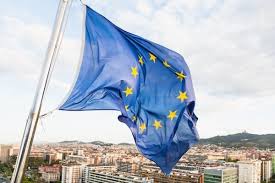
Read pages 256 to 260 in Perspectives on Globalization. How can international trade be regulated to ensure that its benefits can be equally shared by all people?
IMF (International Monetary Fund): a global network of institutions created in 1945 to promote international trade and the regulation of currency among Western countries
This organization has grown from a membership of 45 countries to 185. The original role of the IMF was to stabilize the global economy after the Second World War. It is now involved in providing emergency short-term loans to less-developed countries and promotes reforms for economic growth and stability in countries experiencing economic and political issues.
What are the roles of the World Bank and the IMF since the end of the Second World War? What efforts are made to ensure that benefits of economic globalization are equally shared? Are they effective or ineffective?
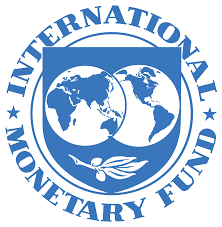
Read pages 261 to 266 in Perspectives on Globalization. What opportunities and challenges has economic globalization brought to Canada?
What effects does trade liberalization have on the people of Canada?
Read pages 218 to 221 in Perspectives on Globalization.
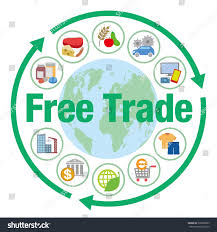
What are the perspectives on freer trade?
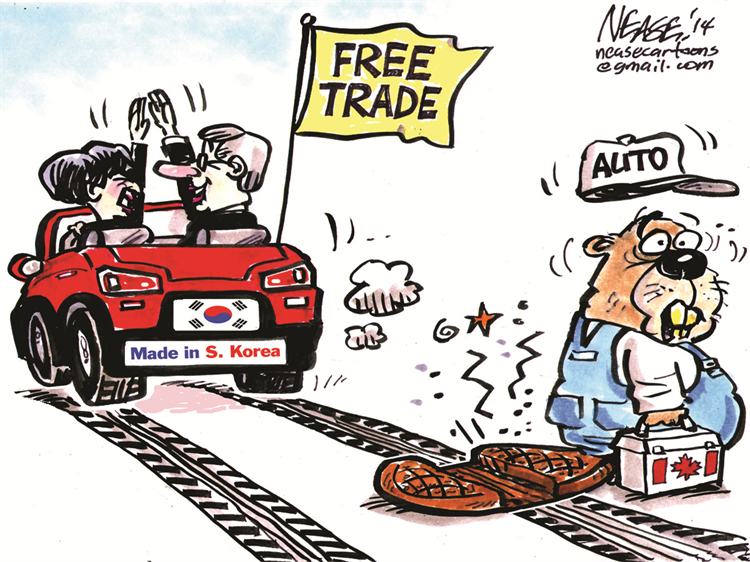
Economic globalization presents great potential for increasing the material wealth of a country. This wealth could ensure the prosperity of the citizens of the country. Not all countries are in a position to access the potential of economic globalization. There exist some economic, political, and technological barriers to this access. The World Bank, the IMF, trading blocs, and agreements on trade liberalization or regulation are strategies to make the opportunities of economic globalization fair. They are not always effective in assuring benefits of economic globalization for everyone.
Is Prosperity Sustainable?
Is prosperity sustainable in the twenty-first century?
Profit or sustainability? Are corporations serious about efforts to create sustainability? Opponents of economic globalization and the expansion of global giants are skeptical of the claims of many corporations. In marketing media and on their corporate websites, many corporations now state that sustainability and care for people and the environment are part of their business plan. The skeptics accuse them of greenwashing.
greenwashing: refers to the strategy used by some businesses to persuade consumers that they align their business actions to efforts to sustain the environment
This is often a marketing strategy.
Activity
Go to the Internet and research the marketing strategies of these companies. Stop Greenwashing has a collection of ads that citizens have uploaded as evidence that profit drives a new green attitude in some of the multinational corporations.
- PepsiCo, Starbucks, and Matt Damon – H20 Africa clean water initiative and Ethos bottled water
- Coca-Cola and REPET wear and the Mount Franklin water campaign to reforest Australia
- GE and Ecomagination
- Hummer by General Motors
- President’s Choice and Canada’s Greenest Shopping Bag
Economic globalization
What examples demonstrate that economic globalization does or does not lead to universal prosperity?
Examine whether economic globalization improves universal prosperity. Use this to guide your notes.
Activity
This is a required activity to support the inquiry but will not be graded.
The World Bank has created the Online Atlas of The Millennium Development Goals. You can read about each of the eight Millenium Development Goals and see how much of the world is meeting the targets by viewing the map.
Click on the interactive map. Resize the map to view how much of the world continues to experience issues with poverty, hunger, education, gender equality, and child mortality.
|
Millennium Development Goals (MDG): a list of eight goals developed in the year 2000 by the United Nations in collaboration with world leaders to set goals for the reduction and elimination of poverty, hunger, disease, illiteracy, environmental degradation, and discrimination against women The target date for achieving measurable results is 2015. hunger: an issue that affects individuals and population when access to food is limited over a considerable period of time gender equality: the degree to which opportunities are accessible by both men and women in a country child mortality: refers to the death of a child within the first five years of life The child mortality rate is used to classify the ability of a country to meet the basic needs of its citizens. A high child mortality rate is related to a low standard of living and issues related to access to basic services such as adequate food, health care, and education. |
Read
Developing Countries Must Improve Capacity To Absorb And Use Technology, Says World Bank
Watch the following video on the World Bank's warning on the rising prices of food.
Who Benefits?
What examples demonstrate that prosperity is accessible only to developed countries already enjoying the benefits of economic globalization?
Those who take an anti-globalization position often point out the lack of equity perpetuated by economic globalization. Equity is very much related to quality of life and prosperity. One understanding of equity is equal access to opportunities and the absence of barriers to the basic needs of life. Complete this Explore task to find out in which ways economic globalization creates inequity and limits prosperity to developed countries.
|
equity: equal access to opportunities and the absence of barriers to the basic needs of life inequity: a condition of unfairness or injustice anti-globalization: the position on the issues of globalization held by individuals and groups opposed to the expansion of global trade, global trade agreements, and multinational corporations because of the negative consequences on the quality of life and environment of people around the world, especially in less-developed countries pro-globalization: support of the free flow of influences and forces throughout the world international trade: the exchange of raw resources and manufactured goods and services between countries around the world |
Read
Click HERE to for your reading.
The World Bank Data classifies economies by gross national income per capita. Examine the graph titled Developing economies increase their share of the world output.
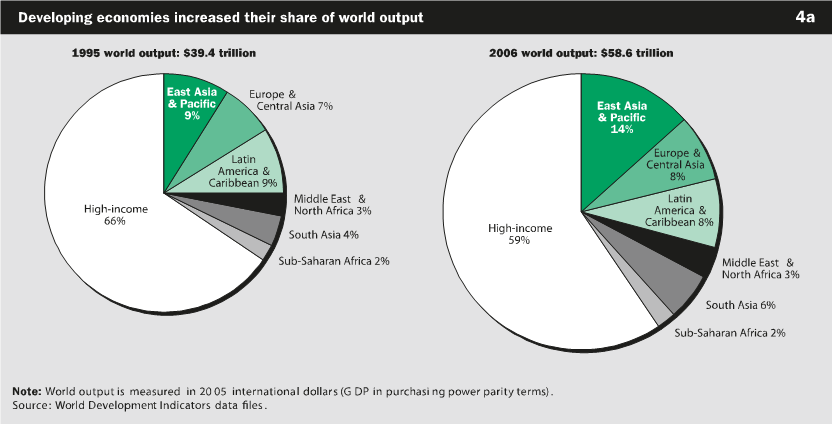
Check out this site Classifying Countries by Income
Assignment
Please complete your Who Benefits? assignment at this point.
Transnational Corporations and the Interests of the Country.
Transnational Corporations and the Interests of the County
How compatible are the interests of transnational corporations with the interest of the country?
You have now completed the lessons for Module 4 Section 3. Complete the section challenge activity to demonstrate the new understandings you have developed about the opportunities and challenges of contemporary economic globalization.
In this section challenge you will evaluate the compatibility of transnational corporations with the interests of the country to meet the needs of its citizens.
Step 1: My Understandings of Transnational Corporations
Think about the concept of transnational corporations. What relationships exist between transnational corporations and the countries in which they operate? Why would countries encourage their operations within their borders? What threats could these corporations pose to the countries in which they operate?
Step 2: My list of Opportunities and Challenges Posed by Transnational Corporations
Brainstorm the kinds of benefits and potential challenges presented by transnational corporations.
Step 3: Developing a Set of Basic Priorities
Create a set of basic priorities that countries should apply to meeting the needs of its citizens. Use the following criteria to establish the priorities:
- prosperity of the people
- equality of treatment and opportunity
- territorial security
- cultural and social vitality
- environmental health
- influence on the world stage
What specific priorities will meet these criteria?
Some countries integrate their priorities into their constitution.
For example, the Constitution of Poland, adopted in 1997, offers the following principles:
The Republic of Poland shall safeguard the independence of and integrity of its territory and ensure the freedoms and rights of persons and citizens, the security of the citizens, safeguard the national heritage and shall ensure the protection of the natural environment pursuant to the principles of sustainable development.
Step 4: Researching a Transnational Corporation
Research the actions and policies of a transnational corporation. You may select a transnational corporation suggested by your teacher or one from the following suggestions:
- Alcan
- Bombardier
- Chevron
- Continental
- Disney
- Exxon
- Goldman Sachs
- Honda
- HP (Fortune Magazine)
- McDonald’s
- Microsoft
- Nike
- Pepsi
- PG
- Saab
- SC Johnson
- Starbucks
- Suncor
- Swiss Re
- Tesco
- Tim Horton’s
- Wal-Mart
Multinational Monitor lists the best and worst multinationals. A search of “multinational corporation” in Wikipedia, the Free Encyclopedia provides links to informative websites describing the history and operations of over forty transnational corporations. (See References.)
Assignment
Please complete the Challenge: Transnational Corporations and the Interests of the Country assignment at this point.
Glossary
Section 3 Glossary
anti-globalization: the position on the issues of globalization held by individuals and groups opposed to the expansion of global trade, global trade agreements, and multinational corporations because of the negative consequences on the quality of life and environment of people around the world, especially in less-developed countries
average gross national income per capita: the amount of income earned on a yearly basis calculated on total value of currently produced goods and services of a country divided by the population of the country
barrier: a condition that blocks or impedes an opportunity
child mortality: refers to the death of a child within the first five years of life
The child mortality rate is used to classify the ability of a country to meet the basic needs of its citizens. A high child mortality rate is related to a low standard of living and issues related to access to basic services such as adequate food, health care, and education.
corporate citizenship: refers to the extent that the actions and decisions of a multinational corporation are responsible and consider the impacts on people and the environment
A trend of the last few decades has been to align corporations with humanitarian causes to present an image of good corporate citizenship.
Digital Divide: refers to the gap between citizens of countries in the access to digital and information technologies
This gap may be a factor in the country’s ability to participate in the global economy.
equity: equal access to opportunities and the absence of barriers to the basic needs of life
G8 (Group of 8): a group of eight highly industrialized and democratic nations that agree to regularly meet and discuss economic and foreign policies
gender equality: the degree to which opportunities are accessible by both men and women in a country
greenwashing: refers to the strategy used by some businesses to persuade consumers that they align their business actions to efforts to sustain the environment
This is often a marketing strategy.
hunger: an issue that affects individuals and population when access to food is limited over a considerable period of time
IMF (International Monetary Fund): a global network of institutions created in 1945 to promote international trade and the regulation of currency among Western countries
This organization has grown from a membership of 45 countries to 185. The original role of the IMF was to stabilize the global economy after the Second World War. It is now involved in providing emergency short-term loans to less-developed countries and promotes reforms for economic growth and stability in countries experiencing economic and political issues.
inequity: a condition of unfairness or injustice
international trade: the exchange of raw resources and manufactured goods and services between countries around the world
Millennium Development Goals (MDG): a list of eight goals developed in the year 2000 by the United Nations in collaboration with world leaders to set goals for the reduction and elimination of poverty, hunger, disease, illiteracy, environmental degradation, and discrimination against women
The target date for achieving measurable results is 2015.
pro-globalization: support of the free flow of influences and forces throughout the world
trading blocs: countries that have an agreement to trade freely between member countries at the exclusion of non-member countries
World Trade Organization (WTO): an international organization of 152 members that works to improve trade relations between its members and to remove tariffs and trade barriers; formerly the General Agreement on Tariffs and Trade
Unit 4 Quiz
You have now completed the explorations necessary to gather understandings to respond to the related issue: To what extent does globalization contribute to sustainable prosperity for all people?
The understandings you gathered in this module are based on how your quality of life, and the quality of life of others presented in Explore, have been influenced by contemporary economic globalization. You had opportunities to analyze your own understandings of prosperity, identify key events and ideas that contribute to the expansion of economic globalization, and examine multiple perspectives on sustainability and prosperity in a globalizing world. The Explore featured examples of how economic globalization created opportunities and/or barriers to universal prosperity. You also examined examples of how multinational corporations are dealing with issues of sustainability.
You are now ready to take the Unit 4 Quiz.
In Module 5 you will look at what impacts are created by actions and policies associated with globalization.
Position Paper #2
Assignment
Please complete Essay # 2 Draft: To what extent should we embrace contemporary economic globalization?
You will be marked on the following RUBRIC:
|
|
|
Analysis of Source
|
|
Argumentation
|
|
Evidence
|
|
Effective Communication
|
|
-critically analyzes the source -demonstrates an understanding of the source and its relationship to an ideology |
|
-establishes a position -develops arguments based on logic and reason -establishes a relationship between position taken, argumentation, and the sources perspective |
|
-is relevant and accurate -reflects depth and/or breadth of social studies knowledge -evidence may be theoretical, historical, contemporary, and/or current events. |
|
-fluency and essay organization -syntax, mechanics, and grammar -use of SS10-1vocabulary and social studies terminology |
||
|
Excellent E |
6
5.5 |
The understanding of the source is insightful and sophisticated. A perceptive discussion of the source and its relationship(s) to the perspective(s) is/are comprehensively developed. |
8
7.5
7 |
Convincingly established position with judiciously chosen, consistent and compelling argumentation. The relationship between (see above) is perceptively developed and demonstrates insightful understanding of the assignment. . |
8
7.5
7 |
Evidence is sophisticated and deliberately chosen. The relative absence of error is impressive. A thorough and comprehensive discussion of evidence reveals an insightful understanding of social and application to the assignment. |
8
7.5
7 |
The writing is fluent, skillfully structured, and judiciously organized. Control of syntax, mechanics, and grammar is sophisticated. Vocabulary is precise and deliberately chosen. The relative absence of error is impressive. |
|
Proficient Pf |
5
4.5 |
The understanding of the source is sound and adept. A purposeful discussion of the source and its relationship(s) to perspective(s) is/are capably developed. |
6.5
6
5.5 |
Purposely chosen position with logical and capably developed argumentation. The relationship between (see above) is clearly developed and demonstrates sound understanding of the assignment. |
6.5
6
5.5 |
Evidence is purposeful and specific. Evidence may contain some minor errors. A capable discussion of evidence reveals a solid understanding of social and application to the assignment. |
6.5
6
5.5 |
The writing is clear and purposefully organized. Control of syntax, mechanics, and grammar is capable. Vocabulary is appropriate and specific. Minor errors in language do not impede communication.
|
|
Satisfactory S |
4
3.5
3 |
The understanding of the source is straightforward and conventional. A generalized discussion of the source and its relationship(s) to the perspective(s) is/are adequately developed. |
5
4.5
4 |
Appropriately chosen and developed position with straightforward and conventional, argumentation. The relationship between (see above) is generally developed and demonstrates adequate understanding of the assignment. |
5
4.5
4 |
Evidence is conventional and straightforward. The evidence may contain minor errors and/or a mixture of relevant and unnecessary information. Discussion reveals a general acceptable understanding of social and application to the assignment. |
5
4.5
4 |
The writing is straightforward and functionally organized. Control of syntax, mechanics, and grammar is adequate. Vocabulary is conventional and generalized. There may be occasional lapses in control and minor errors; however, the communication remains generally clear. |
|
Limited L |
2.5
2 |
The understanding of the source is incomplete or lacks depth. The discussion of the source and its relationship(s) to the perspective(s) is/are oversimplified and lacks development. |
3.5
3
2.5 |
Confusing and largely unrelated position with repetitive, contradictory, and/or simplistic, argumentation. The relationship between (see above) is superficially developed and demonstrates an uninformed belief. |
3.5
3
2.5 |
Evidence is somewhat relevant but is unfocused and/or incompletely developed. The evidence contains off topic detail. The discussion reveals an oversimplified and/or confused understanding of social and the application to the assignment. |
3.5
3
2.5 |
The writing is awkward and lacks organization. Control of syntax, mechanics and grammar is inconsistent. Vocabulary is imprecise, simplistic, and inappropriate. Errors obscure the clarity of communication. |
|
Poor P |
1.5
1 |
There is minimal understanding of the source. Discussion of the source and its relationships(s) to the perspective(s) is/are confused, inaccurate, or vague. |
2
1.5
1 |
Irrelevant and illogical position with little or no relationship to the source or argumentation. The relationship between (see above) is minimally developed. |
2
1.5
1 |
Evidence is either irrelevant and/or inaccurate. The evidence contains major errors. A minimal discussion reveals a lack of understanding of social and the application to the assignment. |
2
1.5
1 |
The writing is unclear and disorganized. Control of syntax, mechanics, and grammar is lacking. Vocabulary is overgeneralized and inaccurate. Jarring errors impede communication. |
|
Total in each category: |
|
/6 /8 /8 /8 |
||||||
